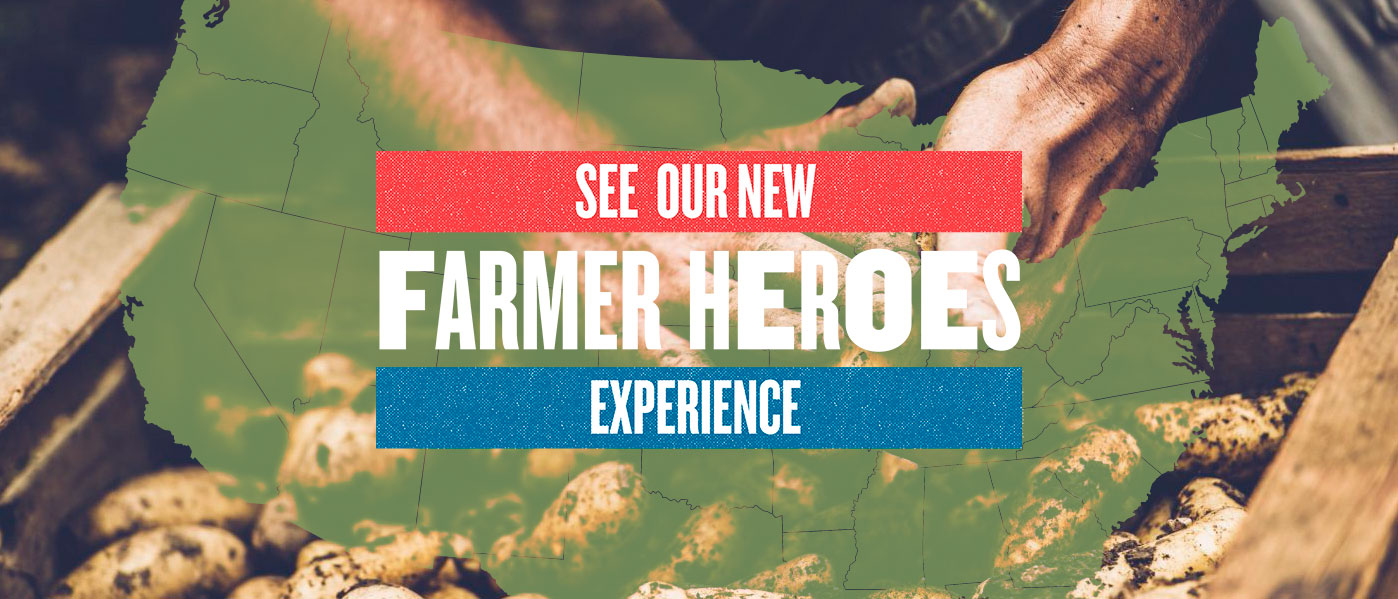Appleton, Minn.

When Brad Fernholz left the family farm in the early 1990s, he was pretty sure his future lay elsewhere.
“When I left for college I was never coming back here. Never,” recalls Brad, drinking coffee in a farmhouse he shares with his wife Kristi and their two young children near the western Minnesota community of Appleton.
Kristi grew up on a farm in the area as well, and she also went off to college and a career. But by the late 1990s, the draw of farming and being near family became strong. They raised organic vegetables for a time while living on a Wisconsin farm and began thinking about what they could do to make the food system more sustainable.
In the fall of 1999, the couple bought 54 acres on the borders of Lac Qui Parle Lake, western Minnesota’s top goose hunting area. The farm had not been a working operation for many years, but it was obvious the low-lying soil was rich. So, those first few years the Fernholzs set out to see just what that soil would grow. They tried a little of everything, from sweet corn to flax. They even considered making the farm a hunting camp.
By the second year on the land, the Fernholzs felt the need for a little direction in their farming. So they enrolled in the Land Stewardship Project’s 2000-2001 Farm Beginnings class.
Kristi, 30, says the course helped them come up with a sharper focus for their farm. Through whole farm planning and brainstorming with their fellow Farm Beginnings participants, the Fernholzs were better able to figure out what they could, and could not, do on the farm.
“We threw all the ideas down and penciled them out, and then exposed them to a whole group of people,” says Brad, who is also 30. “It made us stop and go back to thinking why we were here.”
“It would have taken us years to do that without a group,” says Kristi.
The couple also got a dose of reality when local livestock farmer Jim Van Der Pol came to a class and laid out some worse case financial scenarios for farming. That helped drive home what could happen if a farm gets overextended, markets fall through, or a weather disaster strikes.
“Personally, I appreciate getting hit with reality,” says Brad.
Such brainstorming and planning has brought together two seemingly contradictory forces on the farm: a narrowing of options, and a widening of possibilities. But they may not be as mutually exclusive as they first seem. By narrowing the options on the farm, they don’t have enough acres to make small grains production viable for example, the Fernholzs can now focus on the handful of enterprises that do make sense for this piece of land. One of those is carrots.
“The soil down here loves to raise carrots,” says Brad, leading the way down to a garden plot near the goose marsh. Indeed, the farm has a reputation in this part of western Minnesota for producing plump, delicious carrots. And that reputation has now reached as far as the Twin Cities. The Fernholzs sell certified organic carrots for a premium to the Wedge Natural Foods Coop in Minneapolis through a special “fair trade” agreement for local farmers. Strawberries also seem to be a good fit for the farm, and the Fernholzs have a certified organic u-pick enterprise going.
The couple’s farm, Coyote Grange, is part of the Pride of the Prairie initiative, which is promoting the production and consumption of local foods. One other enterprise they may add in the future is to graze brood cows on the land. The Fernholzs feel animal disturbance is needed to keep the soil and plant growth healthy, and cattle production could help increase cash flow.
“The farm is just begging for livestock,” says Brad.
In this part of western Minnesota, the extended Fernholz family has long been associated with organic, sustainable agriculture. So when the young couple moved back to the area, they already knew a lot of the innovative farmers in the community. But Farm Beginnings helped them stay in contact with that network, a key resource as they brainstorm future possibilities.
When mulling over the options, part of what the couple must consider is time. Until recently, both worked off the farm. Brad is still doing carpentry but Kristi quit her town job last summer to stay home with their 2-year-old boy, Gavin. And now they have a baby girl, Anika. Kristi is an accomplished photographer and sells beautiful nature-based shots taken on the farm.
Whatever the future holds, the couple feels they now have at least a good compass reading for the farm, even if the ultimate destination may be a ways down the road.
“There’s no way you’re going to be ready for farming just through this course,” says Kristi. “It takes a lifetime. But it’s the perfect course for thinking about the options.”
Originally published in the Oct/Nov/Dec 2004 Land Stewardship Letter.


